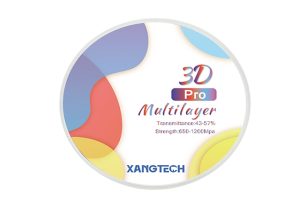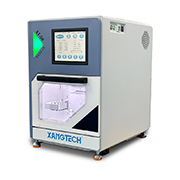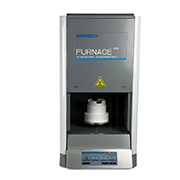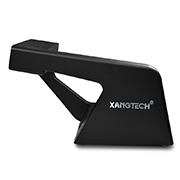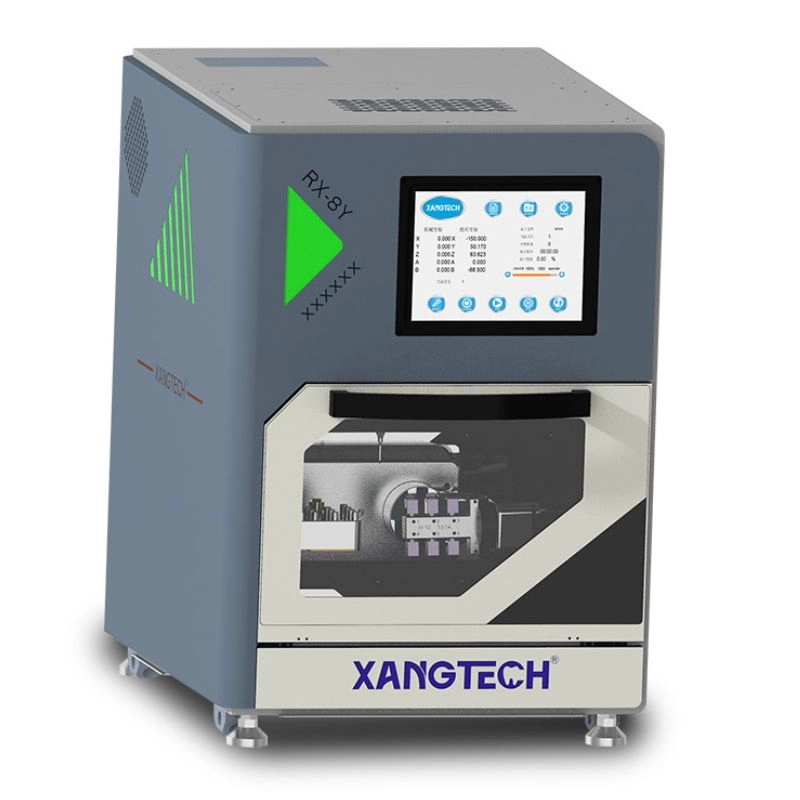Nowadays, dental milling machines have been considered as an indispensable part of modern dentistry. With the help of these machines, dental professionals can create dental restorations, including crowns, bridges, and others, with precision and high efficiency. Moreover, as the demand for individual and customised dental appliances becomes increasingly higher, understanding the capabilities of milling machines is crucial for dentists and dental labs. In this view, the present article will review the key machinable materials in dental milling machines specifying their characteristics, benefits, and compatibility with XANGTECH products.
Understanding Dental Milling Machines
Importance of Material Selection in Dental Milling
The very effectiveness of a dental milling machine is heavily determined by material. A range of milling materials provides a number of unique properties which may affect the process and the eventual dental restoration. When choosing which material to use, one will need to consider such factors as strength, aesthetics, and biocompatibility. Choosing the wrong material may lead to a number of complications, such as premature wear, fractures, or inability to maintain aesthetic. Because of that, knowledge about machinable materials is no less important than experience with milling machines themselves.
XANGTECH’s Leading Dental Milling Machine Models
XANGTECH offers a range of dental milling machines designed to cater to various needs within dental practices. These models incorporate advanced technology that ensures high-quality results, reliability, and user-friendly operation. Whether for a small dental office or a large lab, XANGTECH provides options that meet varying production volumes while maintaining consistent quality in dental restorations. Their commitment to innovation puts them at the forefront of dental milling solutions.
Popular Machinable Materials
Zirconia
Characteristics and Properties of Zirconia
Zirconia is a type of ceramic material which is known for its outstanding mechanical properties. Mainly, this material is characterized by high strength and fracture toughness, which are crucial to dental applications. Furthermore, zirconia is biocompatible, which is necessary for dental applications and restorations because they are placed in the oral cavity. Moreover, zirconia’s translucence is close to that of natural teeth.
Compatibility with XANGTECH Dental Milling Machines
XANGTECH dental milling machines are perfectly designed to mill zirconia efficiently, optimizing both performance and accuracy. The advanced tool designs used in these machines facilitate the high-speed milling necessary for achieving the fine details characteristic of zirconia restorations. XANGTECH’s software solutions also provide tailored milling strategies to enhance zirconia’s overall performance in dental applications.
Lithium Disilicate
Key Features of Lithium Disilicate
Lithium disilicate is another common machinable material used in dentistry which finds its place in clinical practice because of its good aesthetics and relatively strong mechanical behavior. It is rather comfortable to mill and allows to provide quite thin restorations, which means that the material is appropriate for conservative tooth preparations. Lithium disilicate is famous for its translucency which is very close to natural tooth enamel; the material can be used for restorations of front teeth.
Applications and Benefits of Lithium Disilicate in Dentistry
Often for veneers, crowns, and bridges, lithium disilicate offers flexibility across cases. Its great bonding and fracture resistance make it a sturdy selection. When clinicians need to improve workflow in their offices, utilizing materials that can be fabricated directly from a digital impression or in a lab from the digital impression reduces the time to create high-quality dental solutions. While lithium disilicate can be cut chairside or fabricated into crowns, veneers, and bridges directly in the lab with a host of other providers producing milling machines for lithium disilicate, this process can be considerably enhanced with dedicated dental milling equipment.
PMMA (Polymethyl Methacrylate)
Characteristics of PMMA Material
Polymethyl methacrylate, known more commonly as PMMA, is a thermoplastic. Due to its machining ease and favorable properties, PMMA materials is frequently employed in provisional restorations. The already smooth polished material is light in weight, enabling it to be wear comfort for temporary treatments. The biocompatible nature of PMMA also ensures that the material is safe to use in the short-term.
Advantages and Drawbacks of Using PMMA for Dental Restorations
As much as PMMA has many advantages like low cost and excellent machinability, it is worth acknowledging the material’s shortcomings, too. Due to its lack of strength relative to zirconia and lithium disilicate and other ceramics, PMMA remains inappropriate for long-term definitive restorations. Moreover, it can be impacted by wear and tear and the eventual discoloration of the structure. At the same time, it is this very suitability for transitory uses and the instrumentality within the whole restorative process that ensure the polymer’s continued place in dentistry.
Comparisons of Machinable Materials
Mechanical Properties Comparison
Evaluating machinable materials for the purpose of dental milling, one has to take into account the crucial differences in mechanical properties. On the one hand, zirconia is characterized with ultimate strength; in these terms, it is perfectly suitable to use it for posterior restorations where pressure and wear resistance are much needed. On the other hand, both PMMA and lithium disilicate are strong enough to serve for anterior applications. Knowledge of these properties assists in choosing an appropriate material to use in a particular clinical situation.
Aesthetic Qualities Across Different Materials
In dental restorations, especially for visible areas, aesthetics are up front. Lithium disilicate is outstanding because it provides no visible differences owing to its mimic of natural tooth translucency and thus, it increases patient satisfaction significantly. Zirconia also shows an incredible performance in terms of aesthetics nowadays, though there used to be a difference because color-matching was not its way. PMMA is quite capable of providing good aesthetics, but there is hardly any point in taking it into account because it is temporary and you’d have to go for zirconia or lithium disilicate in the future anyway.
Cost-Efficiency Analysis for Various Materials
Although the cost factor also plays a crucial role in deciding the use of machinable materials. As zirconia and lithium disilicate are relatively more durable materials; however, they are expensive too. The lesser need for replacement makes these materials cheaper in the long run. Without any doubt, on the other hand, PMMA can be termed as the cheapest material for machining as it does not last long at all. However, the short life of the material’s life is equally proportional to the quality of the results.
Specialized Materials for High-Precision Results
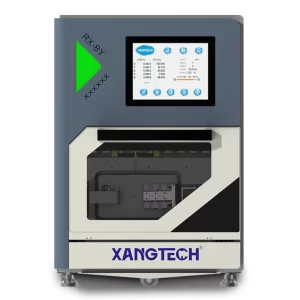
Titanium
Strength and Durability in Dental Applications
Titanium is recognized for its supreme strength and biocompatibility, making it a material of choice for dental implants and frameworks. Its lightweight nature adds to its appeal, allowing for effective integration into the body without adverse reactions. Titanium’s resistance to corrosion is also vital for long-lasting performance in dental applications.
Performance with XANGTECH’s Advanced Milling Technology
XANGTECH’s milling machines are calibrated to handle the unique challenges posed by titanium. The machines utilize specialized tooling and advanced milling strategies that ensure a smooth finish and precise dimensions. This precision is vital for ensuring that titanium implants fit correctly and function effectively within the oral environment.
Glass Ceramics
Aesthetic and Functional Attributes
Glass ceramics offer a balance of aesthetic appeal and functional characteristics, making them popular for veneers and crowns. Their tooth-like translucency and ability to mimic the natural appearance of dentin and enamel make them a sought-after choice in esthetic dentistry. Furthermore, glass ceramics exhibit excellent wear resistance, making them applicable for various dental restorations.
Integration with XANGTECH Milling Solutions
XANGTECH’s milling solutions provide the necessary technology to efficiently work with glass ceramics. The compatibility of these materials with XANGTECH machines allows for rapid production without compromising quality. The precision offered by XANGTECH ensures that dental practices can deliver restorations that meet both aesthetic and functional demands.
Selecting the Right Material for Specific Applications
Criteria for Choosing Machinable Materials
Strength and Durability Considerations
The principles of longevity and performance are synonymous when it comes to selecting machinable materials for use with dental milling machines, where strength and durability safeguard the longevity of machinable material. The machinable material must withstand the mechanical forces it will be subjected to in functional contexts, particularly in posterior restorations where the majority of occlusal force is concentrated. Zirconia is an example of such a machinable material as it has high fracture toughness and is thus a viable option for those areas of the mouth often subjected to higher stress. On the other hand, the strength limitations of PMMA mean it is only a viable option for provisional restorations, despite the ease with which it can be machined. Both examples illustrate the manner in which principles of longevity and performance are included into machinable material requirements.
Aesthetic Requirements
Material selection has to be accompanied by an aesthetic component as it is directly related to patient comfort. Restorations have to be both the same color and equal in translucency when compared to the natural tooth for a proper blend into the existing dental decor. In this regard, lithium disilicate benefits from the fact it resembles enamel and can serve well for anterior prosthetics, where appearance is essential. Zirconia cannot normally be seen as highly aesthetic; however, its modified types can be decent in appearance and are unparalleled in rigidity. Thus, both materials in question can be used in the given case, as they meet the combined criterion of aesthetics and utility.
Biocompatibility Standards
Biocompatibility is crucial, especially when it comes to the materials that will directly interact with oral tissues. They have to be non-toxic and not provoke allergic or instigating responses from the patient. Both zirconia and LD have been tested to meet these standards, ensuring their safety for use as implants and permanent prosthetics. PMMA, although mainly used as a provisional restoration in restorative dentistry, also meets safety standards, allowing for its short-term use to max patient comfort without risking their health after verification.
Common Use Cases for Each Material Type
Defining the particular use cases for each machinable material helps dental specialists identify the proper substance for each application. Zirconia is used for bridges and crowns because this atomic element has exceptional strength characteristics. It means that zirconia can withstand the occlusal forces in any load-bearing situation, providing the necessary durability and longevity for these elements. At the same time, Lithium disilicate is the most common material for veneers and anterior restorations. In these cases, the emphasis is placed on aesthetic qualities and the possibility to employ minimally invasive methods. Alternatively, PMMA, a type of plastic, can be used for provisional restorations; not only is this material easily machinable, but it is also very cheap.
Future Trends in Dental Milling Materials
Emerging Technologies in Material Science
With the rapid advancement of material science, new opportunities for dental milling materials are emerging. Owing to techniques like additive manufacturing and novel composite materials, custom solutions that could render the conventional options outdated seem possible. Researchers are actively developing materials with improved mechanical characteristics that also offer better appearance for each patient. Besides, hybrid materials that allow to combine the best properties of ceramics and polymers are also likely to be actively explored by dentists in the close future. Technologies like 3D scanner are being integrated with traditional milling processes, enabling the crafting of intricate designs that were once difficult to achieve. These innovations present an exciting opportunity for practices to adopt more versatile and efficient materials in conjunction with their dental milling machines.
Potential New Materials on the Horizon
The dental industry is not an exception in terms of investigating potential new materials that could be used for milling. For instance, some bioactive ceramics that are developed to better integrate tissues and develop organism might seem promising for dental implants. It appears that such materials that improve actual performance might also provide health benefits on a cellular level. In addition, some possibilities of nanotechnology are related to integrating new materials that have better strength, aesthetic qualities, and levels of bioactivity. Therefore, there are already various options available to clinicians that are undergoing clinical research and testing. Overall, they could substantially improve the entire process of restoration in dentistry.
Impact of Technological Advancements on Material Choices
Current technological advancements are rapidly reshaping the digital dental industry and affecting material choices for milling applications. For instance, such improved technological characteristics as a higher computational power enable simulating material behavior under a wide variety of circumstances and thus make the selection process much better informed on the basis of the material usage appraisal. Moreover, the current upgrade in the field of dental milling machinery, including but not limited to the increase in spindle speed and the degree of accuracy, allows for applying a larger variety of materials in the process. As a result, manufacturing processes in dentistry will become increasingly efficient and will affect the quality of the products offered to customers positively. The specified combination of technologies will lead to the improvement of the tools used for milling and maintenance of teeth, thus enabling dental operations to become more efficient.

